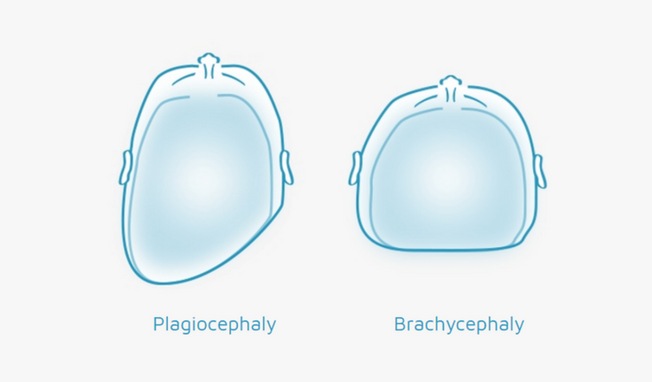
Flat head syndrome can occur at different times for different babies. Knowledge of this can help parents to be more aware of the condition, know what to look out for, and know when to seek advice. To get a better understanding of when flat head syndrome occurs and develops, and when it is diagnosed, keep reading.
When does flat head syndrome occur?
Flat head syndrome can develop during the following stages of a baby’s life:
• Before birth: known as pre-birth moulding, flat head syndrome can develop when a baby is still in the womb. This is usually a result of limited space and is more common in multiple births. When babies are restricted in space, there is often less amniotic fluid to cushion the head, resulting in a slight pressure that can cause flat head syndrome
• During birth: it isn’t unusual for babies to develop flat head syndrome during the birthing process. The birth canal is a narrow space and baby’s heads have to adapt to safely travel through. Subsequently, a baby’s head shape can alter and develop a flattening.
• After Birth: flat head syndrome can also occur after birth as a consequence of continued pressure to certain areas of the head. This can be caused by something as simple as a baby sleeping on the same side of their head each night.
Why does flat head syndrome occur?
Whether flat head syndrome occurs before, during, or after birth, the condition develops as a result of a baby’s soft and malleable skull. A baby’s skull needs to be soft to accommodate for growth during the first few years of life, and as a consequence of this softness, continued pressure to certain areas of a baby’s head can result in a flattening.
When is flat head syndrome diagnosed?
Some parents notice a flattening on their baby’s head immediately after birth, whereas this can come later on for others. This is largely determined by when a baby has developed their flattening and how severe it is.
Flat head syndrome can be formerly diagnosed by a baby’s doctor, health visitor, or one of our expert clinicians. The condition can be diagnosed visually, but our clinicians take measurements to determine the severity of a baby’s flat head syndrome.
How do parents identify flat head syndrome?

Parents and carers can visually identify their baby’s flat head syndrome, which is usually most identifiable when looking at a baby’s head from above. Plagiocephaly looks a little like a parallelogram and brachycephaly is visible as a flattening across the back of a baby’s head. Many babies with flat head syndrome have a combination of plagiocephaly and brachycephaly. Make sure you check out our guide on spotting symptoms of flat head syndrome for more detailed information.
Should parents be concerned?
Most cases of flat head syndrome are mild and tend to correct naturally, especially if a baby developed the condition before or during birth. Parents should expect to see improvements during the first few weeks of life, particularly if repositioning techniques are adopted.
When should parents seek advice about treatment?
If a baby’s head shape doesn’t dramatically improve over the course of a few weeks, we recommend that you seek advice from professionals. It is unlikely that a case of flat head syndrome will improve on its own if repositioning techniques have failed.
At Technology in Motion, we recommend cranial helmet treatment when babies have moderate to severe cases of flat head syndrome, and when repositioning techniques have failed. The ideal age for helmet treatment is between 4 and 7 months of age, but treatment can be started up to 14 months of age.
To find out whether your baby would benefit from our helmet treatment, book an appointment at your nearest clinic.


